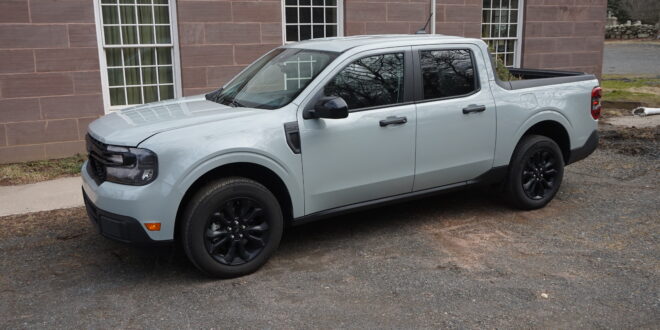EAST HADDAM, CT – Every now and then a vehicle like the Ford Maverick XLT Hybrid surreptitiously arrives in the driveway with minimal fanfare. And a week later, it departs with oodles of serendipity. In this case, it was more than just a happy coincidence because such affection was achieved the old-fashioned way – by earning it.
Ford is the only brand that offers a choice of compact, mid-size and full-scale pickups. The company’s consciously not only gone after each and every market segment, but it’s also routinely sought out further niches to serve any and all customers.
While some categories might be minimally profitable, if at all, who else can say that they’ve reverted back to a pushrod engine option for certain F-250 applications because it’s a torquier alternative in a world that’s full of modern overhead cams?

The compact Maverick is yet another example of Ford’s diligently dominant marketing strategy. It has only one competitor in the Hyundai Santa Cruz.
Dearborn, MI-based Ford considers the Maverick to be the “compact truck that breaks the pickup mold.” Korean upstart disrupter Hyundai, meanwhile, calls the Santa Cruz “a sport adventure vehicle.”
So, obviously, there’s a difference of opinion between the utilitarian and lifestyle nature of the two. And it shows.
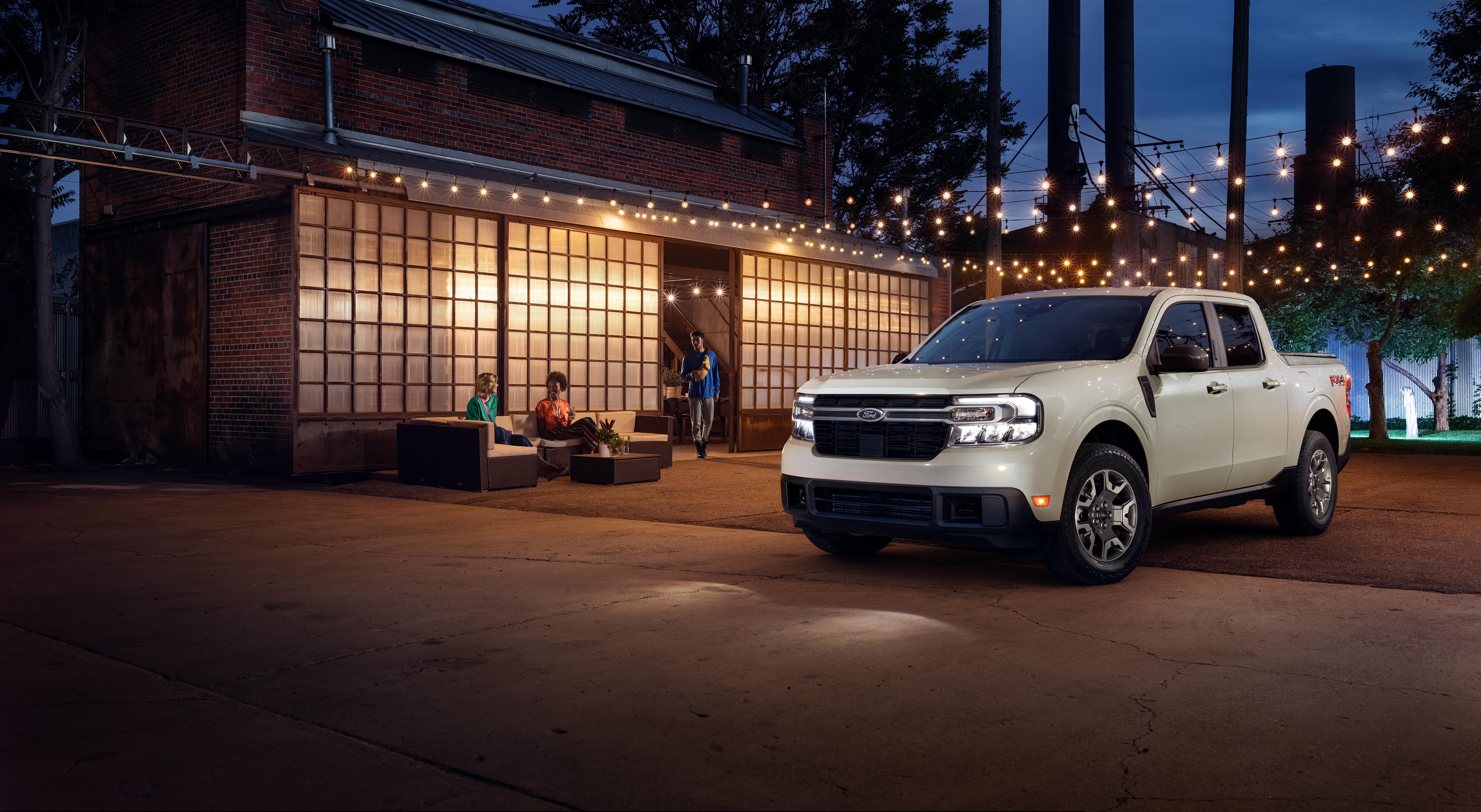
The Maverick is discreet in design, with soft flowing, though functionally blocky, lines. There’s minimal embellishment and sculpture and it’s purposefully handsome.
The Maverick’s posture could be considered conservatively Midwest as opposed to the Santa Cruz’s swoopier, California presence.
Likewise, the interior is similarly practical. For those of us who grew up with the Ford XLT trim level as the creme de la creme, those days are gone. In the Maverick, that brings you mid-level, heated, cloth upholstery with tasteful, Navy Pier blue-Medium Slate gray accents.

The Lariat is now the most upscale variant with what’s called ActivX® synthetic (non-animal based) seating material. There’s plenty of storage nooks and crannies, down to a flip-up, under-seat arrangement in the back. The off-beat interior door pulls, by the way, are intended to lock in a bicycle wheel in the rear, with the seat folded.
Instrumentation is intuitive and effective. An eight-inch center touchscreen highlights what is a straightforward interior, though the screen seems a bit glare prone and the rotary gearshift detents could be more positive. Otherwise, there’s a variety of textures throughout the cabin in keeping with its user-friendly intent. Some deliberate attention to many of the plastic trim surfaces has added an aura of refinement, which could otherwise have come off as cheap.
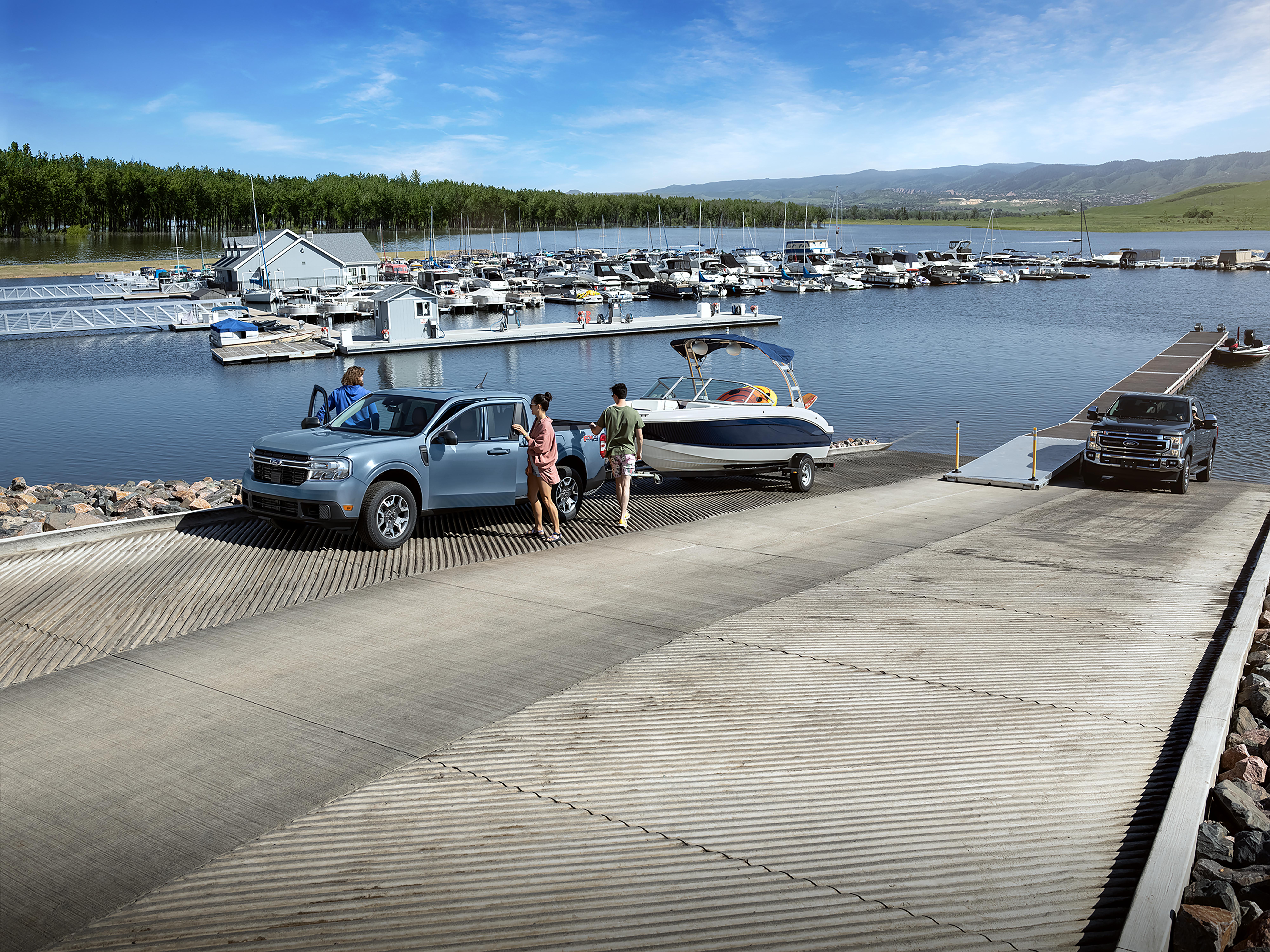
To satisfy its versatile, Ford git-‘er-done design brief, the Maverick originally came standard with a 2.5-liter, 191-hp four-cylinder Hybrid engine and a continuously variable transmission (CVT), while a more powerful 2.0-liter, 250-hp turbocharged four-cylinder and 8-speed automatic was logically optional.
For 2024, performance – and, apparently, profit – has taken precedent over operating expense. The spec’s have been reversed and the Hybrid is now a $1,500 option while the Turbo four is standard fare.
No doubt due to demonstrated market demand because the former gets 42 mpg City and 33 Hwy (compared to 23/30). Thus, environmental friendliness has been relegated to the option list, which is rather un-Ford-like after all the Maverick “Go Green” standard Hybrid announcement hype.
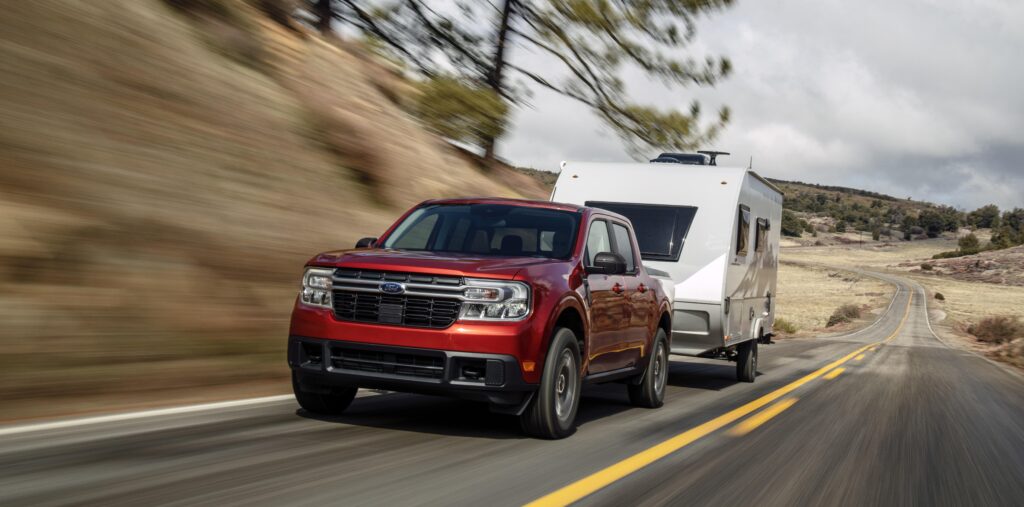
The XLT level Mavericks start at $26,315, while mine stickered at $34,113. The pleasant, front-wheel drive (FWD) Hybrid was smooth and well-mannered with plenty of everyday poise and performance.
All-wheel drive (AWD) is unavailable with the Hybrid engine because it requires Multi-Link Trailing Arms instead of the FWD’s Independent Twist-Beam rear axle. Though that suspension certainly proved comfortable and compliant along the broken-up backroads here in eastern Connecticut.
It’s well known that the Maverick has been a runaway sales success and demand has been exceeding supply. So much so that many dealers have been applying supplementary “market adjustment” premiums over invoice. Sorry to say, it seems that the parent company might be strategically cashing in a bit, too.
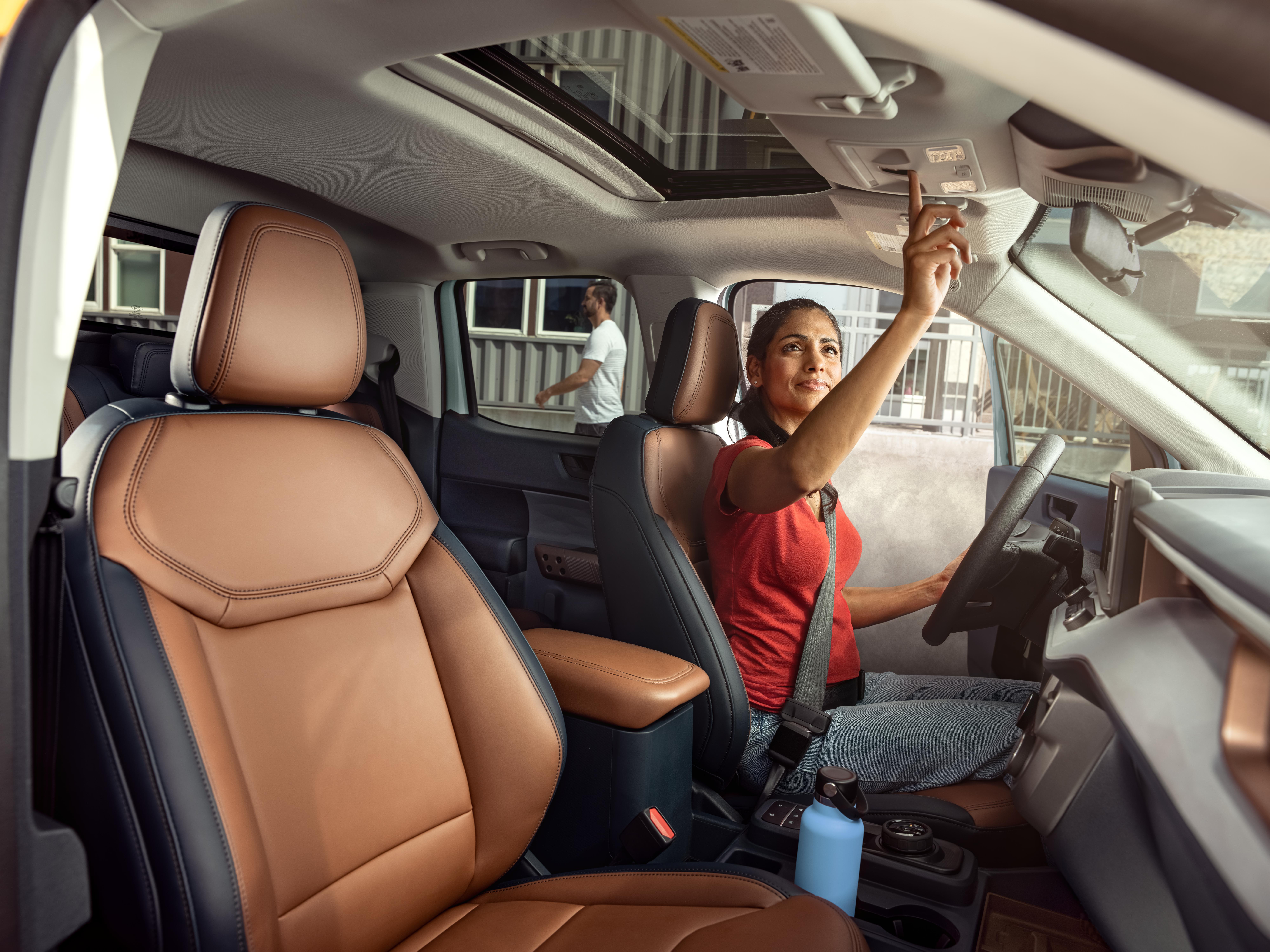
Only you can decide if the 4½-foot bed and 1,500-lb. payload (2,000-lb. Hybrid CVT towing capacity) will satisfy your needs. If not, being from Ford, there are obviously other alternatives as referenced above.
Since the Maverick is derived from the unibody Escape/Bronco Sport crossover platform instead of being body-on-frame, don’t expect the similar four-door Maverick to ever arrive as an extended cab two-door with a longer bed. This is unfortunately for me as a motorcycle hauling empty-nester.
Despite my disappointment concerning the standard engine specification exchange, I’d still love to live with a Maverick Hybrid. As I’ve previously professed back in December, it’s the right vehicle, at the right time, in the right size, at the right price, and with the right operating economy. This makes it a do-it-all delight.
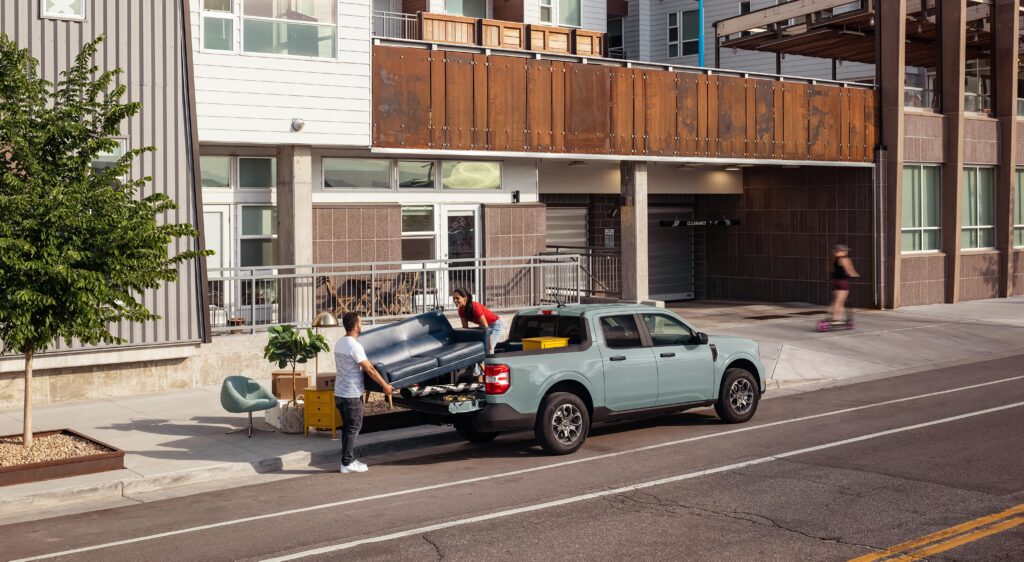
(Unless otherwise noted, photos are courtesy of Ford.)
 RIDE-CT – Classic Cars Celebrating Classic Cars in Connecticut
RIDE-CT – Classic Cars Celebrating Classic Cars in Connecticut

